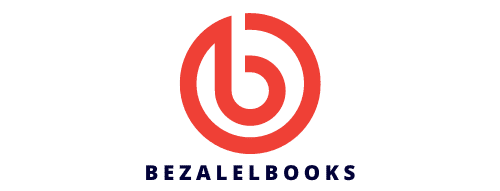How to Establish a Color-Coded Filing System for Efficient Document Management at Home?

In today’s increasingly paperless world, we still find ourselves dealing with a barrage of paper documents. Bills, tax forms, medical records, and other important files often pile up on counters and desks, creating clutter and causing frustration. You might find yourself wasting precious time searching for that one crucial document amongst your piles of paper. So how can you conquer this chaos? The answer lies in implementing an efficient color-coded filing system. By assigning different colors to distinct categories of documents, you can easily organize your files and reduce the time spent hunting for paperwork.
Why a Color-Coded Filing System?
Before you start creating file folders and slapping on labels, let’s explore why a color-coded filing system is a wise choice. Traditionally, filing systems involve laborious sorting of documents into folders and then filing these folders in alphabetical or chronological order. While this may seem systematic, finding a specific file still requires you to leaf through several documents before hitting the jackpot.
En parallèle : How Can You Create a Dual-Purpose Guest Room with a Fold-Away Murphy Bed?
Enter the color-coded filing system. Research shows that color enhances our ability to recognize patterns and recall information. When you assign colors to your file categories, you are essentially creating a visual map for your documents. This makes it much easier and quicker to locate a specific file. You simply look for the color associated with the category, rather than reading labels or sifting through documents.
How to Setup a Color-Coded Filing System?
Setting up a color-coded filing system may seem daunting at first, but with a little planning, it becomes a straightforward process. The first step is to categorize your documents. Typical categories include financial, medical, insurance, and personal. You could also have categories for each family member, or even for different projects if you run a home business.
A lire également : How to Optimize an Eco-Friendly Cat Litter Area in a Compact Apartment?
Once you’ve decided on the categories, assign a unique color to each one. You can use colored file folders, or use plain folders with colored labels. The key here is consistency. For instance, if you decide that all financial documents will go into red folders, then every time you see a red folder, you will know it contains financial documents.
Labeling Is Critical
In a color-coded filing system, labels play a crucial role. They not only indicate what’s inside each file but also add an additional layer of organization. For example, within the ‘financial’ category, you might have separate files for ‘bills’, ‘taxes’, and ‘bank statements’.
When creating labels, keep them brief but descriptive. Also, make sure they are legible. You might want to consider investing in a label maker for a more professional look.
Adapting the System to Your Needs
Like any system, a color-coded filing system needs to be flexible enough to adapt to your unique needs. For example, if you live in Tennessee, Kansas, or Arkansas, you may have specific state-related documents that need their own category and color. Similarly, if you run a home business, you might need separate colors for different clients or projects.
This is where the power of the color-coded filing system truly shines. You can easily add or remove categories, change colors, or reorganize files as your needs evolve.
Maintaining Your Filing System
Establishing a color-coded filing system is not a one-time task—you need to maintain it to keep your documents organized. Set aside a specific day each week or month to go through your paperwork. Discard documents that are no longer needed, and file new ones in the appropriate folders.
Remember, the goal of a color-coded filing system is not just to make your office look colorful. It’s about creating a system that simplifies your life and saves you time. So take the leap, organize your documents, and discover the joy of a clutter-free workspace.
Effective Use of Color-Coded Filing System Tools
With the basic understanding of the color-coded filing system, it’s also essential to know the tools you need to make this system effective. Two main tools are indispensable in setting up this system: file folders and labels.
File folders often come in a variety of colors, which makes them perfect for a color-coded filing system. When purchasing these folders, consider the categories of documents you have. Buying a diverse set of colors will allow you to allocate different hues to each category. For instance, if you have chosen red for financial documents as per our previous example, ensure that you have enough red folders to accommodate all your financial paperwork.
Labels, on the other hand, are essential in providing an extra layer of organization within the color-coded filing system. These could be as simple as sticky notes or as professional as printed labels using a label maker. Regardless of your choice, remember that the label should clearly state the contents of the folder. This way, you can easily identify the specific documents in each category without having to open every single folder.
There are also software solutions available that support a digital color-coded filing system. These solutions are particularly useful if you need to manage a substantial amount of digital documents. Companies such as our Southwest Solutions Group, based in headquarters Lewisville, offer digital document management systems that help you categorize and color-code your files for easy retrieval.
The Impact of a Color-Coded Filing System
The visual appeal of a color-coded filing system is undeniable. However, its impact goes beyond aesthetics. The efficacy of color coding in office filing systems has been proven to increase productivity, reduce errors, and save time. In fact, many professional spaces, including law firms, have adopted this system, reaping its benefits and enhancing their overall workflow.
Color coding makes it easier to locate files, reducing the time and stress associated with finding documents. For instance, if you know that all your medical documents are in green folders, you don’t have to go through every single folder in your filing cabinet. You just locate the green folders, and your search becomes much simpler and quicker.
Moreover, a well-maintained color-coded filing system can have a significant impact on space management. By regularly reviewing and discarding unnecessary documents, you can keep your system lean and efficient. This not only keeps your workspace tidy but also makes your cabinet or file drawer look more organized and less intimidating.
Conclusion
To sum up, a color-coded filing system is an efficient way to organize your paper files, whether for your individual needs or for a home office. By categorizing your documents and assigning them unique colors, you can easily locate and retrieve them when needed.
From Kansas to Tennessee, irrespective of where you live or work, and no matter the nature of your paperwork, employing a color-coded filing system can streamline your document management process, saving you time and stress.
However, it’s important to remember that the implementation and maintenance of this system require consistent effort. Regularly updating and reviewing your system is crucial to ensure its efficiency. Therefore, don’t shy away from changing or adjusting the system as your needs evolve.
In conclusion, with the right approach to categorization, selection of colors, and maintenance, a color-coded filing system can transform your document management process, making it a joy rather than a chore. So why wait? Start organizing your documents today, and experience the difference a color-coded filing system can make.
